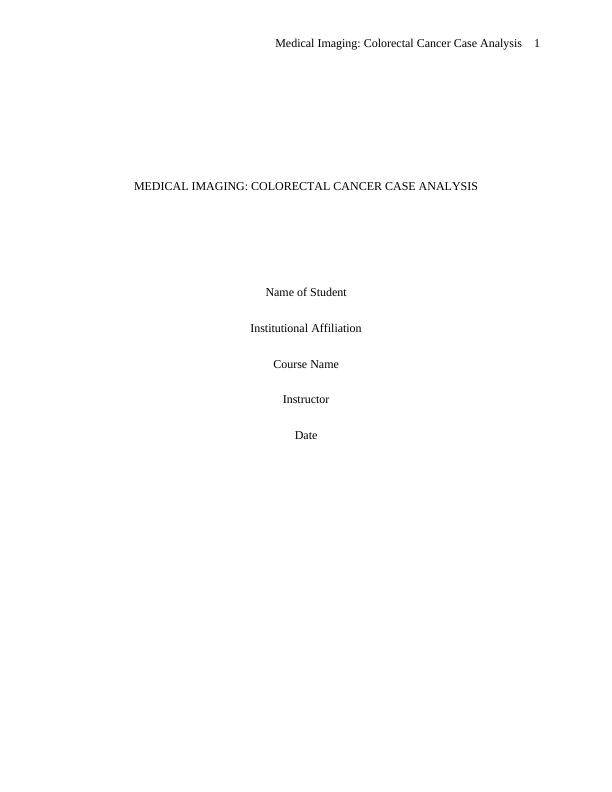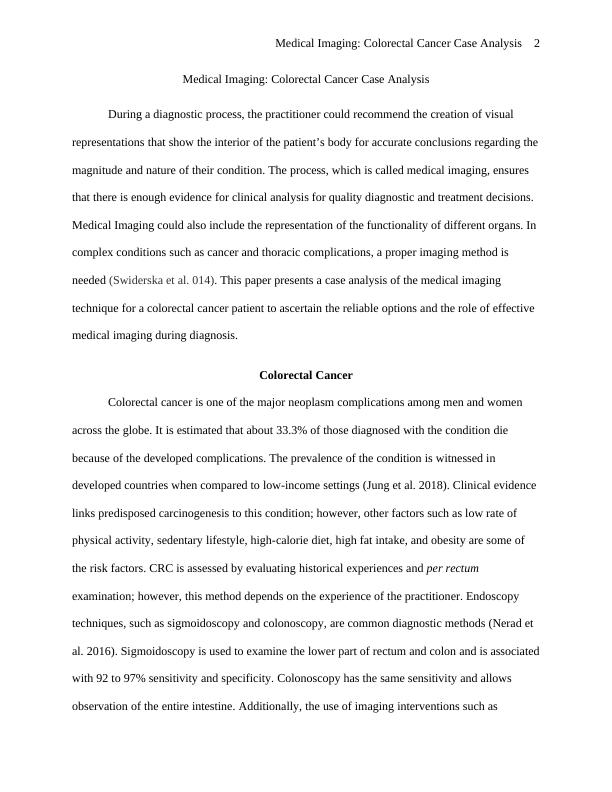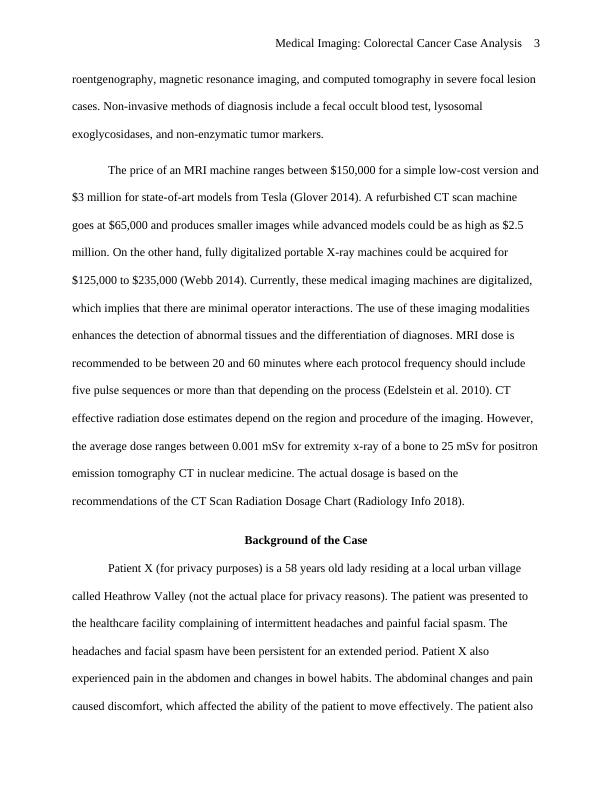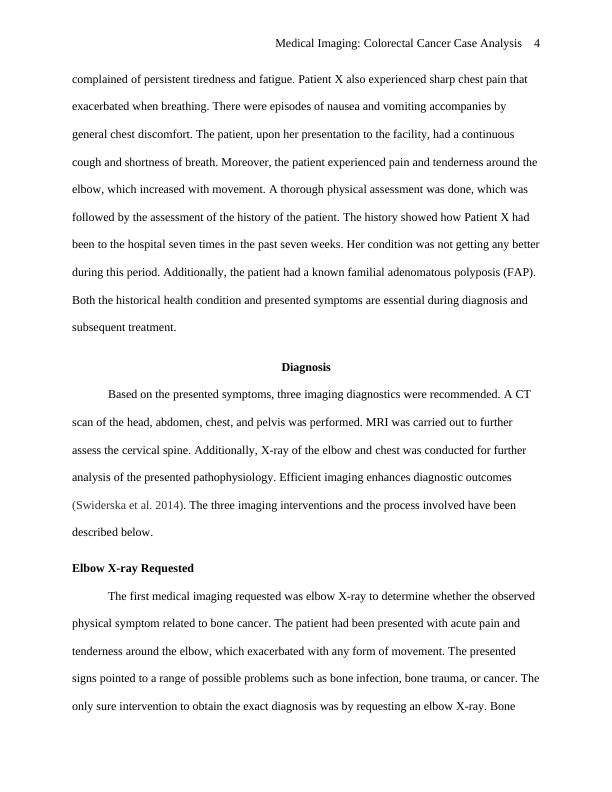Medical Imaging: Colorectal Cancer Case Analysis 2022
A case study evaluating the role of diagnostic imaging in the management and treatment of a patient with a specific pathology, focusing on the patient's presentation, diagnostic imaging tests, comparison with literature, and evaluation of the overall management.
Added on 2022-09-23
About This Document
I have attached an assignment brief as well as a draft I made for the assignment. The draft also contains the comments of my marker regarding the direction of the assignment please do follow as indicated thankyou. The referencing is university of west of England Harvard (UWE Harvard). Please note not Harvard but UWE Harvard I had also started the assignment but didn't have time to finish it if you would like that as guidance just let me now.
Medical Imaging: Colorectal Cancer Case Analysis 2022
A case study evaluating the role of diagnostic imaging in the management and treatment of a patient with a specific pathology, focusing on the patient's presentation, diagnostic imaging tests, comparison with literature, and evaluation of the overall management.
Added on 2022-09-23
End of preview
Want to access all the pages? Upload your documents or become a member.




